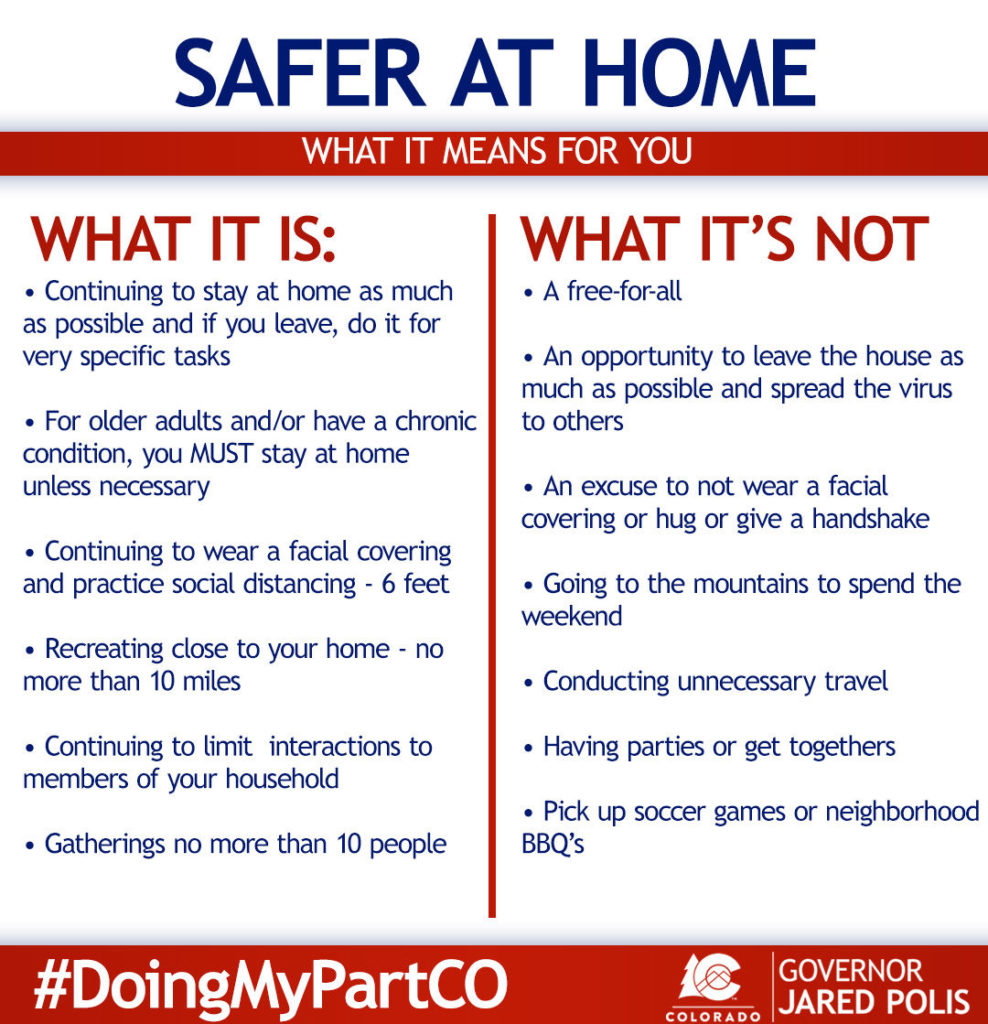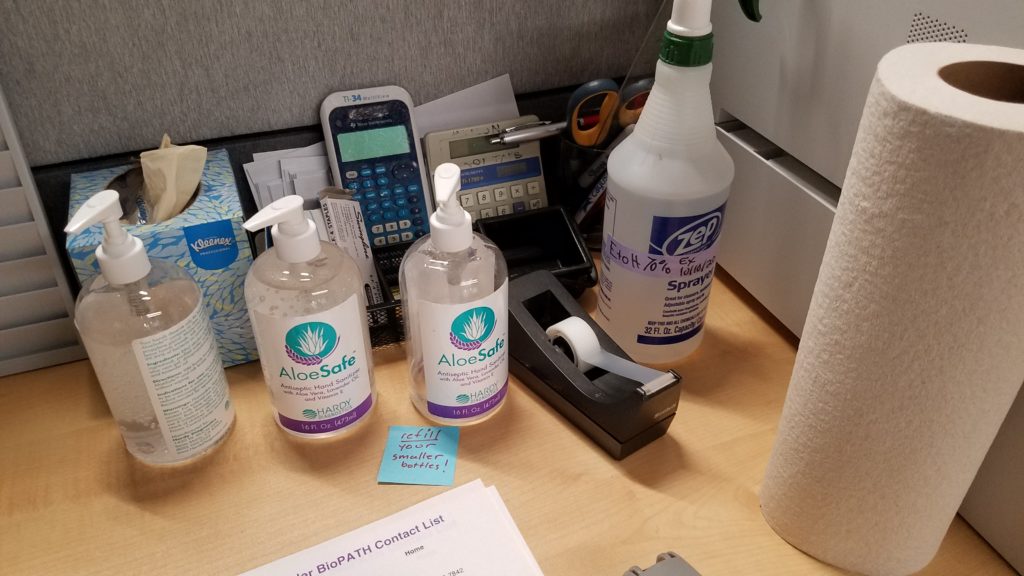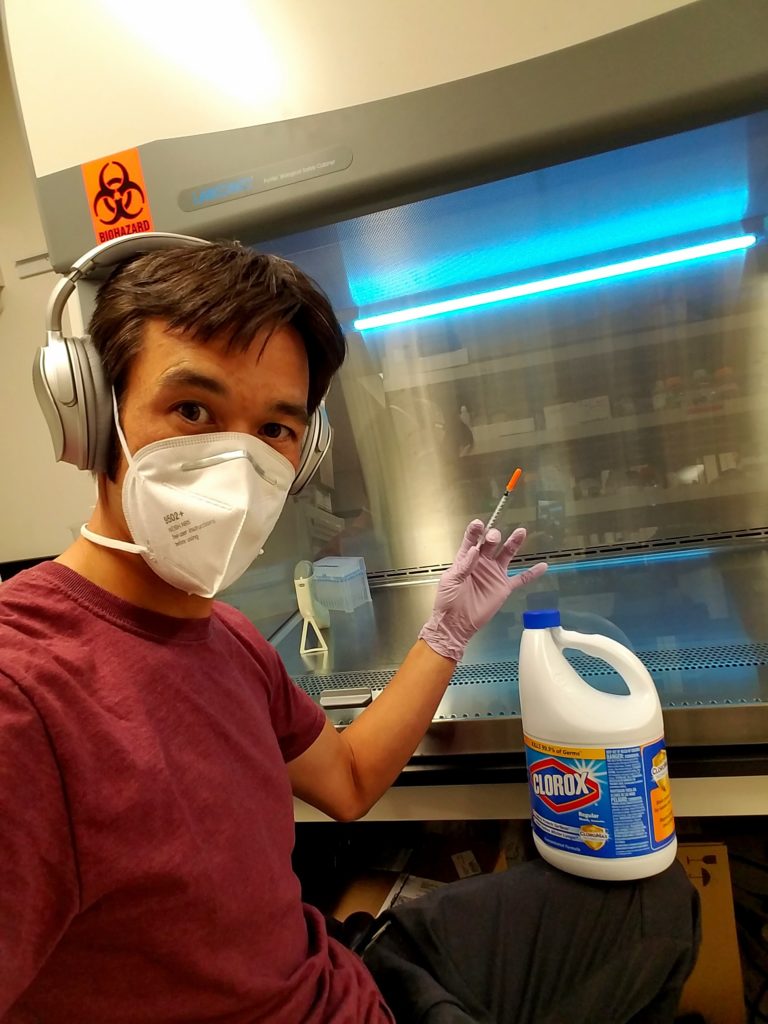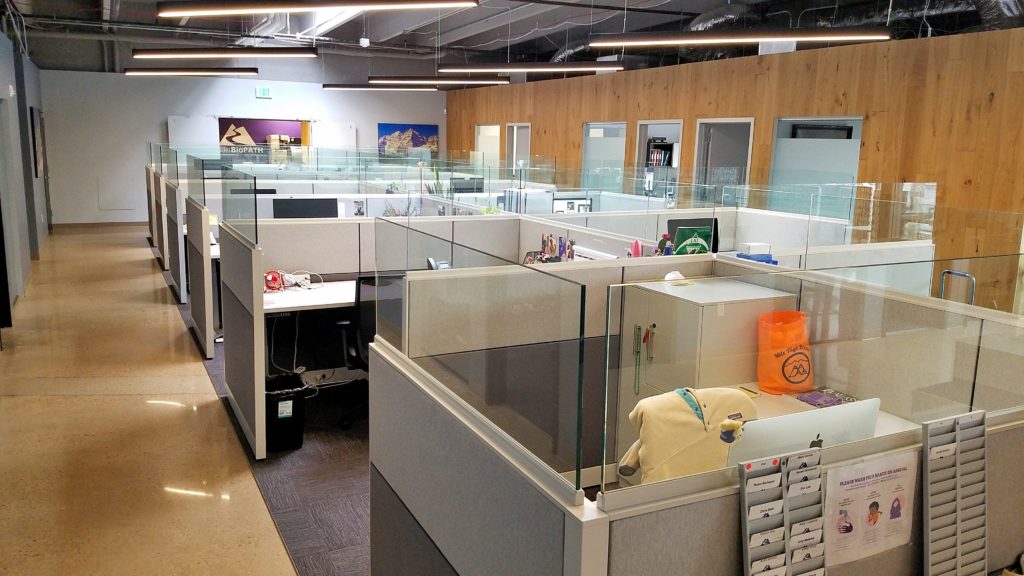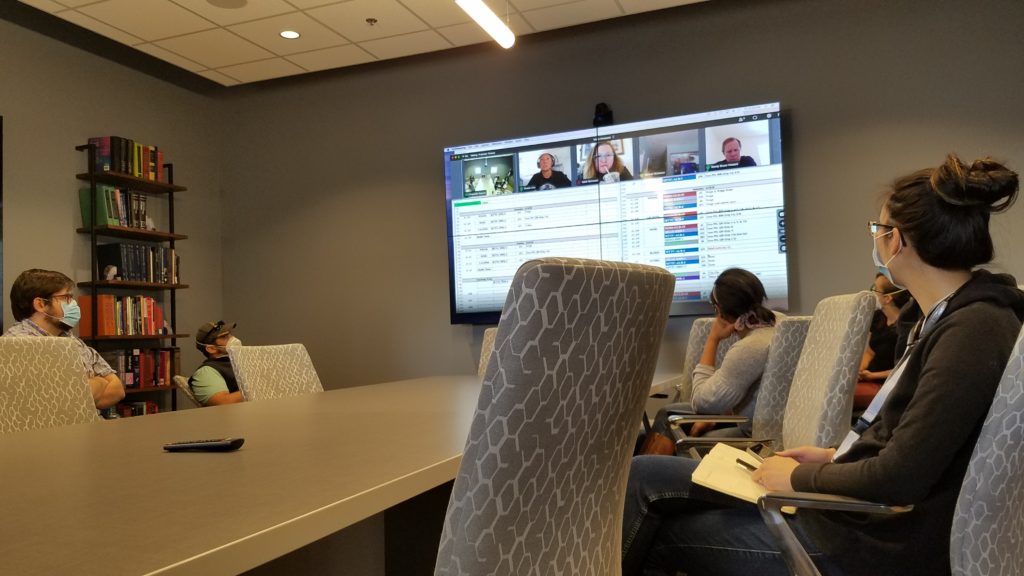By now some of you know that this past weekend I took a very short trip back to see family in California, traveling by plane both directions. I know many people are itching to hop back on a plane, travel and to get away from it all. So to help everyone make a more informed choice I’ll lay out what I did to mitigate much of the risk of flying and how my experience went navigating all the public spaces that come with traveling to a different state. If you want to ask (or scold if you must) me about my personal reasons for doing this you are more than welcome to send me a DM or email and I’ll respond individually with that information, but its personal and thus not suited for a public forum and not the point of this writeup.

My Mitigation Plan
For me this whole process was a test of my ability to creation infectious disease mitigation plans, a skill I learned and honed working in tuberculosis and HIV labs for many years. So I did not simply hop on a plane and wait to see what happened, I had a whole step by step plan of all the risks involved with travel, how I would protect myself and how I would act in certain situations. Below is my initial plan that I laid out BEFORE traveling, and it is VERY conservative.

Now on to the reality of the situation and what I observed and found. I’ll lump both my flights together as a way to give the sum of a couple different experiences for each step listed above.
The whole journey for me started in Boulder boarding the RTD AB bus which heads to the airport. Under normal circumstances these buses are packed and can be standing room only, but right now RTD is limiting the number of passengers on each bus to <20, has suspended fare collections and is requiring all drivers/passengers to wear face coverings. When I got on it was apparent it was going to be a quiet trip, just myself and one other person headed to the airport!
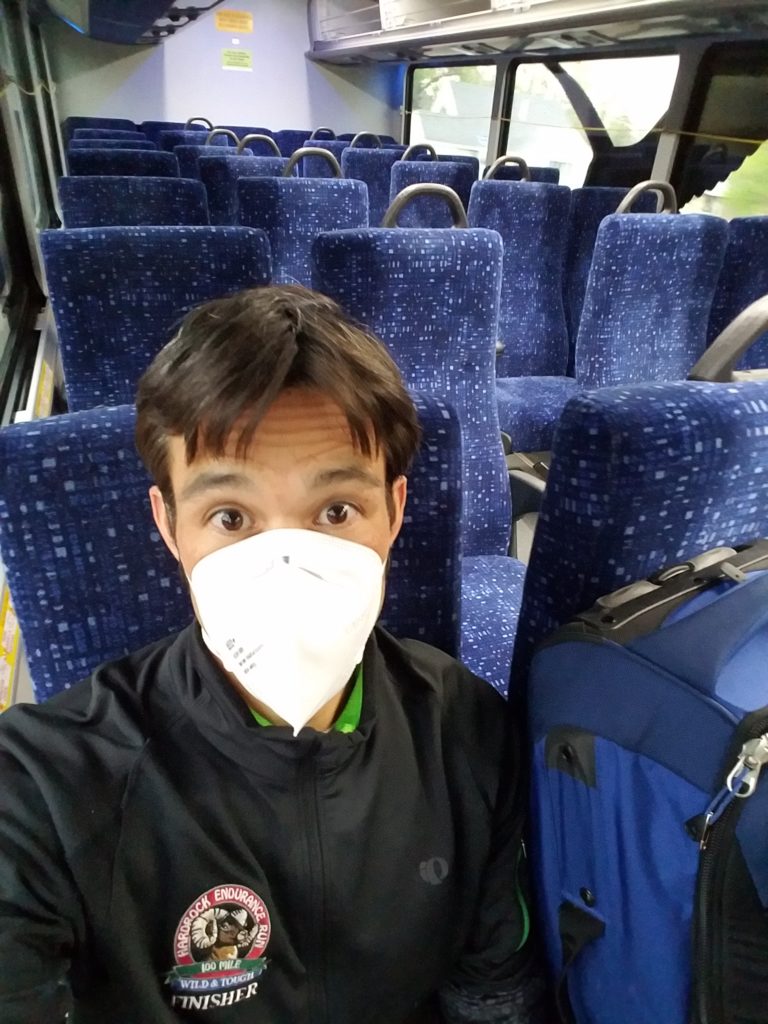
The Airport
Needless to say the ride went smoothly, but I still kept my mask on the whole time. Arriving at the airport I unloaded my own bag and headed up the escalators to security. I was astonished to find 1 person (TOTAL) in line in front of me. I walked up to TSA precheck, handed the security office my ID, she didn’t even request I remove my mask (though they did in Oakland), then I passed on through. In Oakland they didn’t even have a precheck lane running, instead they specially escorted me through normal security (shoes on, liquids in the bag). After security I sanitized my hands and ID and headed to the gate. I only passed by a few people, almost all of whom were wearing masks of some variety (they are mandatory in the airport). As I approached the gate I was astonished to see the bar at Timberline Steaks (Denver) was open and seating patrons at the bar/restaurant? I filled my water bottle, washed my hands and headed over to the gate.
At the gate there were only about 20 people heading to Oakland, and 30 people on the return flight, for planes that have a capacity for 140 people. I found a spot at the gate spread out between others, which was easy, and sat down to eat my snacks and grab some water before the flight. This was the first time I removed my mask and it was only for a few minutes in a safely spaced out area. While waiting for my first flight an SWA worker came and sat right behind me, no attempts to space out, and while waiting for my second flight a woman came and stood right in front of me to await boarding. In both instances there was plenty of space to maintain at least 6ft of distancing, but neither person was aware enough to realize the situation.


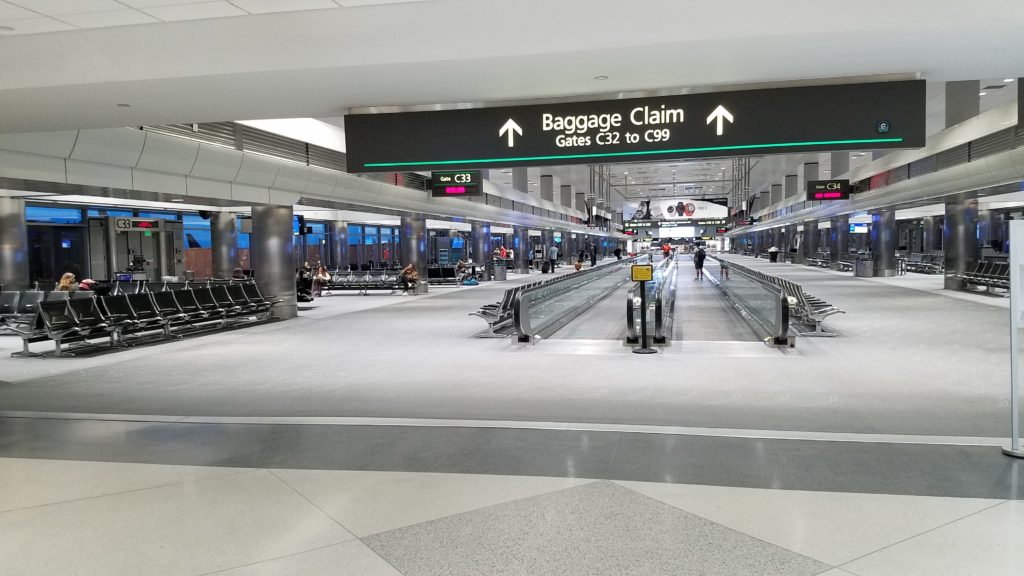

The Flight
Now on to the fun chaos of boarding. Southwest is famous for their open seat policy, normally boarding in groups of 30 at a time, all crammed together in small lines. Now they are calling up 10 numbers at a time to allow people to spread out. The problem is, when they call those 10 numbers it’s a free for all, no organization, so of course everyone immediately rushes to the counter and stands right next to each other trying to be the first on. I simply stood back, let them crowd ahead and walked on once my group had thinned out. Boarding the plane you have to walk by/near people, there’s just no fix for this situation (wearing my N95 still). I chose a window seat about halfway through the plane, spread out from other passengers, right now there is plenty of space on many flights. But, of course, on my first flight someone came and sat right in front of me (there was no need), so I moved over two seats to the aisle. As planes begin to fill up more and more the actual seating part is going to become impossible to not have several people within a 6ft radius of you, so that’s a part of travel risk one will just have to accept as being unavoidable.
On the plane almost everyone was wearing masks, including the crew. But not long after take off many people removed their masks for most of the flight (about ½ on my first plane, and 10-20% on my second). I even witnessed one woman call the flight attendant over to ask a question, then promptly pull down her mask to speak directly with her (really???). On the flight I spent most of my time working and reading as I watched the scenery go by. I did sanitize my hands and remove my mask for a brief few seconds to grab a drink of water, but that was the only time in the 2.5h flight my N95 came off. Overall a pretty uneventful flight once we were in the air, no food and beverage service, a few trash collection passes by the friendly flight attendants, but that was it.
Both flights landed early so we had to wait a few extra minutes for our gates. Even though very few flights are running (<30-40/day outbound at DIA and Oakland it looked like) each airport is only operating a fraction of it’s gates. When we finally got to the gate and the captain turned off the seat belt sign, the mad rush to the aisles to be the first off was on. Social distancing be damned, everyone did their normal thing and crammed into the aisle way right next to each other. So I simply stayed in my seat at the window, let most of the people deplaned, then grabbed my bag and headed out. I cleaned off my hands, took off my outer jacket and headed to the curb side. Again both airports were fairly empty for now, and getting through was a breeze.
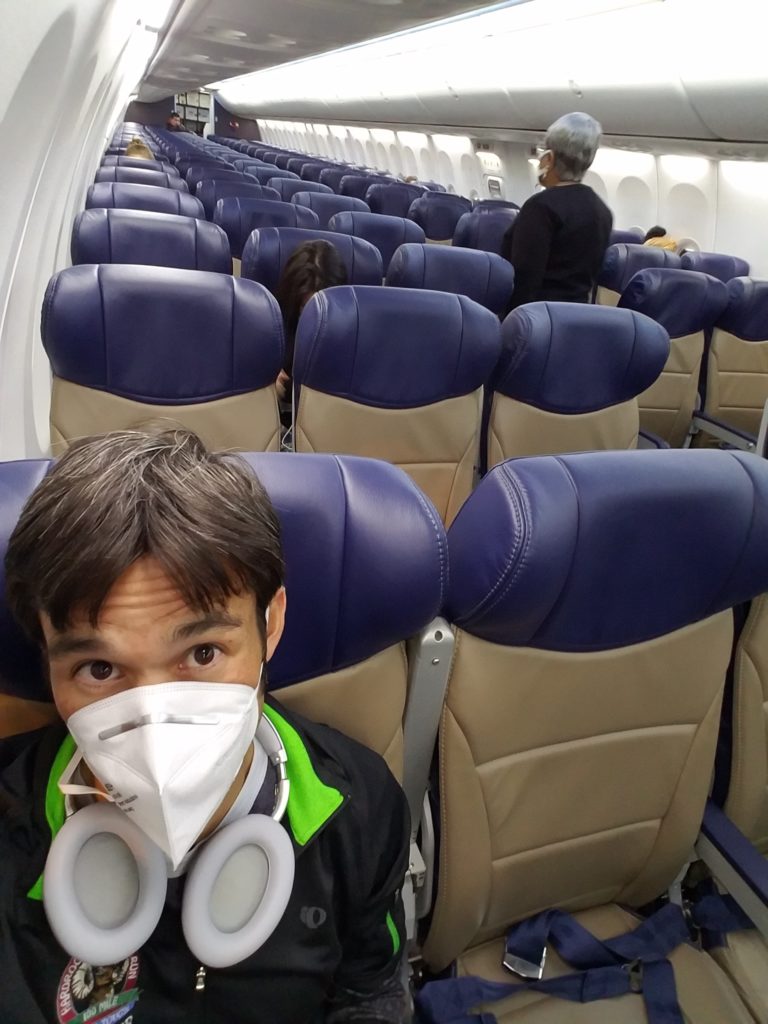
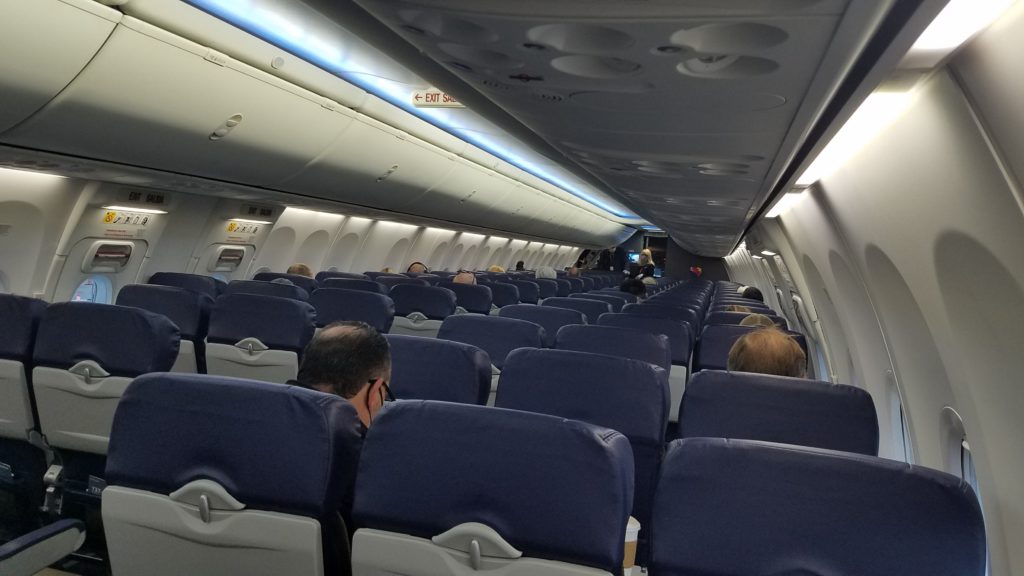
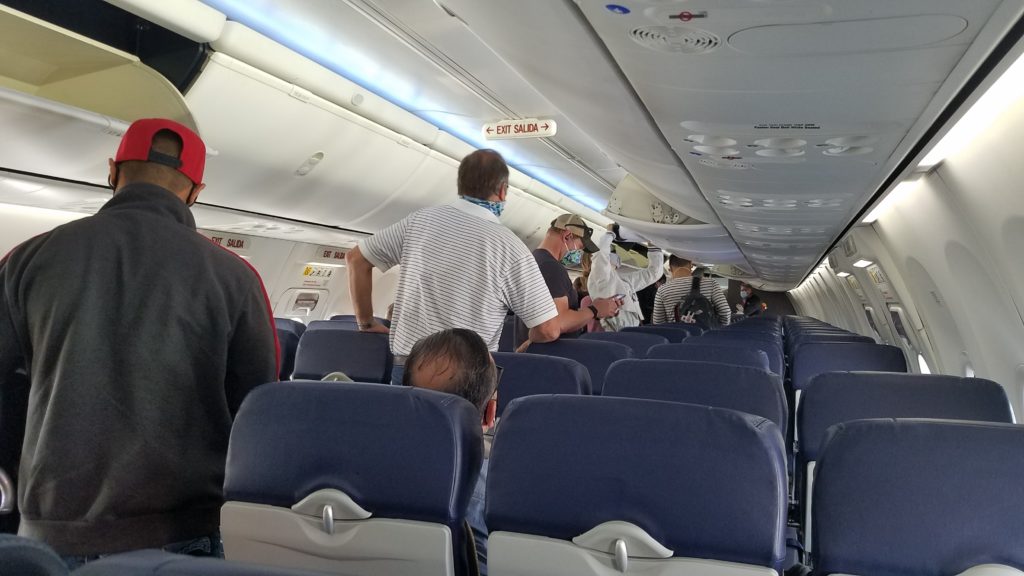
Final Thoughts
Right now the overall take home from my experience is that airports are fairly empty and the airlines are still trying to figure out how to manage travel during the Covid-19 pandemic (which will continue on for many more months ahead). While I was able to protect myself fairly well throughout the entire travel process, it was evident to me that one can not rely on the airline’s good intentions or the unaware strangers around you to protect you. And while right now it’s easy to find some space, once passengers start returning to air travel (and they will) you will be forced into closer quarters/contact with people no matter how hard you try to avoid it.
Lines for buses, security, trains, escalators, seating areas at gates and on planes will all become busier to the point where you’ll have to be within 6ft of people, some will wear masks, some won’t (unless it becomes a Nationally enforceable law, unlikely). So if you choose to travel by plane in the next few months be prepared to accept the risk you are taking and knowing that you will be exposing yourself to people outside your realm of control and to people who might not all be acting very conservatively (or even think the virus is real). Hopefully during this lull in travel the airports and airlines can better test and implement their policies (I’ve written to Southwest), but that remains to be seen. And for those wondering, I’m now on a 14 day quaratine/watch for any symptoms (5/21, Day 3, ending 6/1).

